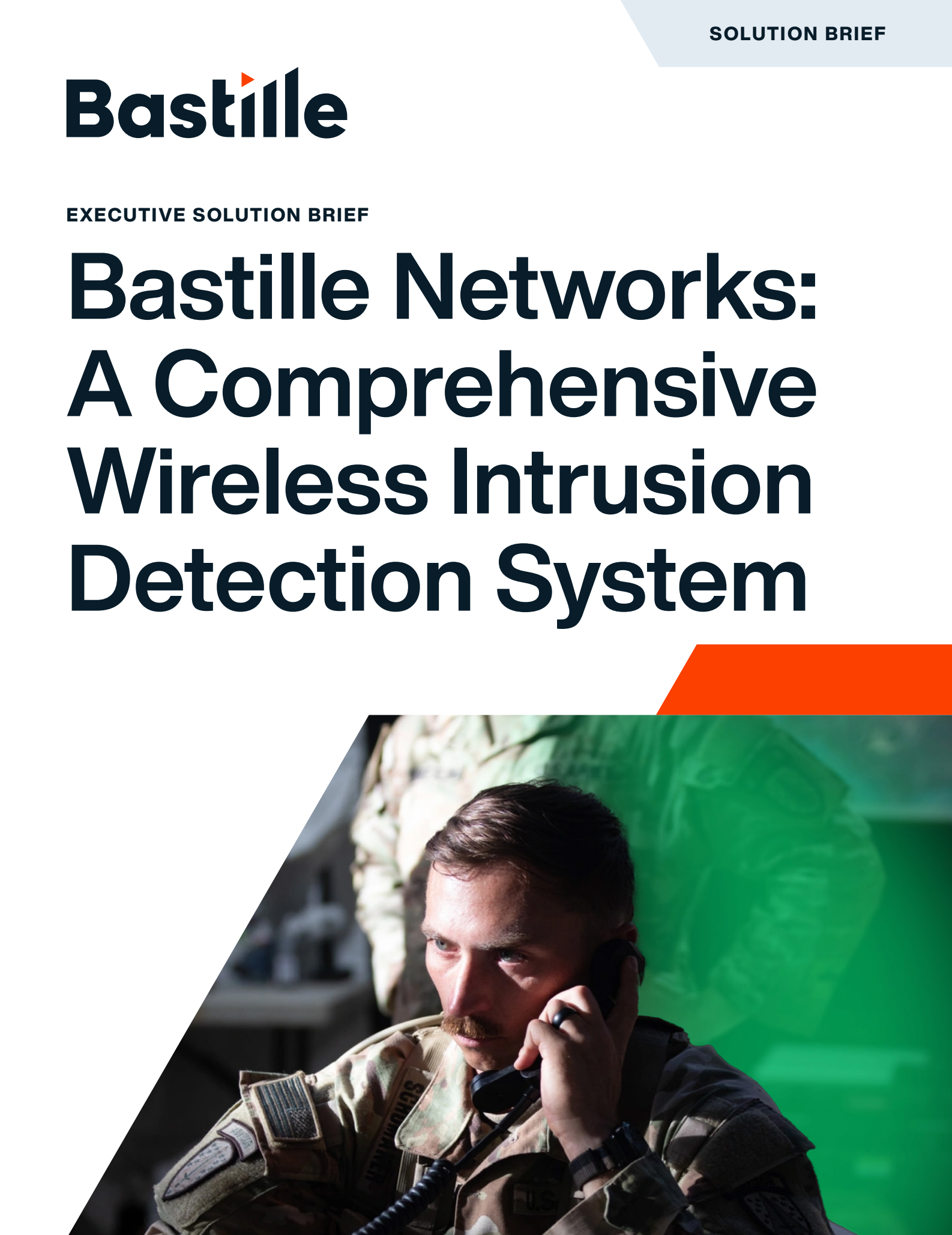
Table of Contents
Introduction: The High Cost of Federal Data Breaches
Federal agencies manage sensitive data within environments that face persistent and sophisticated threats. Despite robust investments in firewalls, endpoint detection, and physical safeguards, one critical vector often remains insufficiently addressed: the wireless airspace.
Wireless networking threats, from smartphones and rogue access points to stealthy wireless transmitters, continue to emerge as silent intrusions, often unnoticed within otherwise secure facilities. Neglecting these vectors has profound and far-reaching implications.
Wireless Intrusion Detection Systems (WIDS) offer a vital last line of defense designed to detect and mitigate wireless threats before they lead to full-scale data breaches. Their relevance is particularly significant in federal environments such as Sensitive Compartmented Information Facilities (SCIFs), intelligence operations centers, and mission-critical Department of Defense installations.
The Invisible Enemy: Wireless Vulnerabilities in Federal Spaces
Conventional cybersecurity frameworks focus on endpoints, servers, and network traffic. However, adversaries have adapted and are exploiting the wireless layer, which remains unmonitored in many secure environments.
Common wireless threats include:
- Evil Twin Access Points: Deceptive Wi-Fi signals designed to collect user credentials
- Sniffing Devices: Passive interception tools targeting wireless data exchanges.
- Radio Frequency (RF) Injectors: Tools used to manipulate unsecured devices.
- Jammers: Devices that disrupt communications during critical operations.
Such threats present a unique challenge in classified and restricted zones, where unauthorized wireless transmissions can persist undetected unless actively monitored.
Anatomy of a Federal Wireless Data Breach
A typical wireless-based breach within a federal agency can unfold in the following stages:
- Insertion: A device, either malicious or misconfigured, is introduced.
- Infiltration: It begins communicating without triggering traditional defenses.
- Exfiltration: Sensitive data is transmitted wirelessly outside the secure zone.
- Obfuscation: Logs are limited, making the breach challenging to trace.
- Delayed Discovery: The breach surfaces only during audits or after data exposure.
WIDS breaks this chain by continuously monitoring wireless network activity, detecting anomalous behavior, and issuing alerts before a threat escalates.
The Role of WIDS in Real-Time Threat Detection
Unlike static vulnerability scans or retrospective logging tools, WIDS continuously monitors Wi-Fi behavior and responds in real time. Effective WIDS deployments detect:
- Unauthorized or unknown wireless devices
- Abnormal signal behaviors
- Wireless patterns linked to attack tactics
- Movement of wireless devices across sensitive boundaries
This capability enables federal agencies to identify and respond to threats before they cause operational harm, particularly in high-security zones where wireless access is tightly controlled.
Why Federal Agencies Are Rethinking Airspace Security
Several developments have prompted a renewed focus on wireless security:
- Expansion of hybrid devices: Phones, wearables, and tablets are common, even in controlled spaces.
- The proliferation of connected tools: Modern operations rely on wireless-enabled systems and peripherals.
- Increased use of wireless-based reconnaissance tools: Unauthorized surveillance devices are more readily available.
- Evolving compliance mandates: Frameworks like RMF, CNSSI 1253, and NIST 800-53 now emphasize continuous wireless monitoring.
In this context, comprehensive wireless visibility is no longer optional but a regulatory and operational necessity.
How WIDS Detects Insider Threats Before They Escalate
Whether malicious or accidental, insider threats remain among the most difficult to detect. WIDS addresses this by:
- Identifying devices that use wireless network connections
- Logging presence anomalies, such as persistent signals after hours
- Triggering alerts on policy violations
- Correlating wireless presence with access events for investigation
These capabilities offer security teams actionable insights that extend beyond traditional digital monitoring.
Preventing Rogue Devices and Shadow Wireless Networks
Seemingly innocuous personal or embedded devices can introduce vulnerabilities. Examples include:
- A contractor plugging a personal device into a shared power source
- Maintenance personnel inadvertently introducing wireless-networked tools
- Embedded sensors in delivered hardware that bypass inspection
WIDS identifies, classifies, and alerts for such devices, preventing them from becoming conduits for data loss or compromise.
SCIFs, Classified Zones, and Wireless Shielding Gaps
Even with TEMPEST-compliant shielding, wireless vulnerabilities persist due to human error or environmental changes. WIDS supports SCIF operations by:
- Auditing wireless emissions for unexpected activity
- Establishing virtual perimeters and triggering proximity alerts
- Detecting deviations from expected wireless baselines that suggest tampering
This additional layer of visibility enhances both physical and procedural safeguards.
Federal Case Example: Addressing Wireless Policy Gaps
In one instance, a U.S. Department of Homeland Security facility conducted a wireless audit using WIDS. Security personnel detected a passive wireless signal near a high-security storage area. The source: an employee had inadvertently brought in a personal fitness tracker.
While no breach occurred, the event highlighted a policy oversight. The WIDS logs enabled a timely response, reinforced internal awareness, and informed corrective policy updates.
Bastille: Wireless Intrusion Detection for Federal Agencies
Bastille offers a WIDS solution tailored for high-security federal environments, covering wireless communications, including Wi-Fi, Bluetooth, cellular, and IoT protocols. Its capabilities include:
- 100% Passive RF Monitoring: Bastille monitors frequencies from 100 MHz to 7.125 GHz without transmitting, preserving air-gapped security.
- Zone-Based Localization: The platform locates unauthorized wireless activity to precise physical areas, such as a desk, room, or hallway, enhancing response coordination.
- Device Identification: Bastille identifies wireless devices based on RF metadata, even if the device spoofs some identifiers.
- Real-Time Visibility and Forensics: Security teams receive actionable detections supported by forensic records suitable for HR, CI, or legal review.
Bastille integrates with standard federal cybersecurity tools, including SIEM, SOAR, and physical access systems, delivering an end-to-end RF security solution. In one federal deployment, Bastille enabled the detection of an unauthorized Bluetooth Low Energy (BLE) device, preventing a compliance violation and facilitating a post-incident policy refinement.
Conclusion: Make WIDS a Mission-Critical Asset
WIDS isn’t a buzzword. It’s a battle-tested tool used by agencies that understand that today’s wireless world doesn’t stop at the SCIF door. Securing the wireless airspace is no longer a luxury but foundational to modern federal cybersecurity. Agencies must extend their defenses beyond the wired perimeter and into the RF domain. Wireless Intrusion Detection Systems serve this purpose, offering visibility, control, and compliance alignment within a volatile and dynamic threat landscape.
Solutions like Bastille provide agencies with the means to detect, localize, and respond to wireless threats before they impact operations, reputations, or national security.
It’s time for every federal agency to ask: “Do we know what’s in our airspace right now?” If the answer is “no,” it’s time to act.
Explore solutions like Bastille’s Wireless Intrusion Detection System to build visibility, compliance, and peace of mind.
FAQs: Wireless Intrusion Detection in Federal Agencies
What is a Wireless Intrusion Detection System (WIDS), and how does it work?
A WIDS monitors wireless networking signals around a facility to detect unauthorized, rogue, or suspicious wireless activity. It passively listens for anomalies, such as rogue access points or RF jamming attempts, and alerts security teams in real time. Unlike conventional cybersecurity tools, WIDS focuses on wireless threats rather than network-based intrusions.
Why is WIDS necessary if other cybersecurity tools are already in place?
Traditional tools focus on network and endpoint activity. They cannot detect or analyze threats occurring entirely over the air. WIDS fills this gap by identifying wireless threats that bypass conventional infrastructure.
Can WIDS be used inside SCIFs or classified areas?
Yes. WIDS is highly applicable to SCIFs. While shielding mitigates RF risks, it is not infallible. WIDS provides a non-intrusive method to detect RF leaks, unauthorized signals, or shielding failures without compromising air-gapped principles.
Does WIDS support federal compliance requirements?
Yes. WIDS supports standards such as NIST SP 800-53 (SI-4, PE-20), CNSSI 1253, and Risk Management Framework (RMF) requirements by providing continuous wireless monitoring, device detection, and zone alerting.
How does WIDS help detect insider threats or rogue devices?
WIDS identifies and alerts for unauthorized or unusual wireless device activity, including identifying devices introduced unintentionally or maliciously, even when standard identifiers are masked or spoofed.

